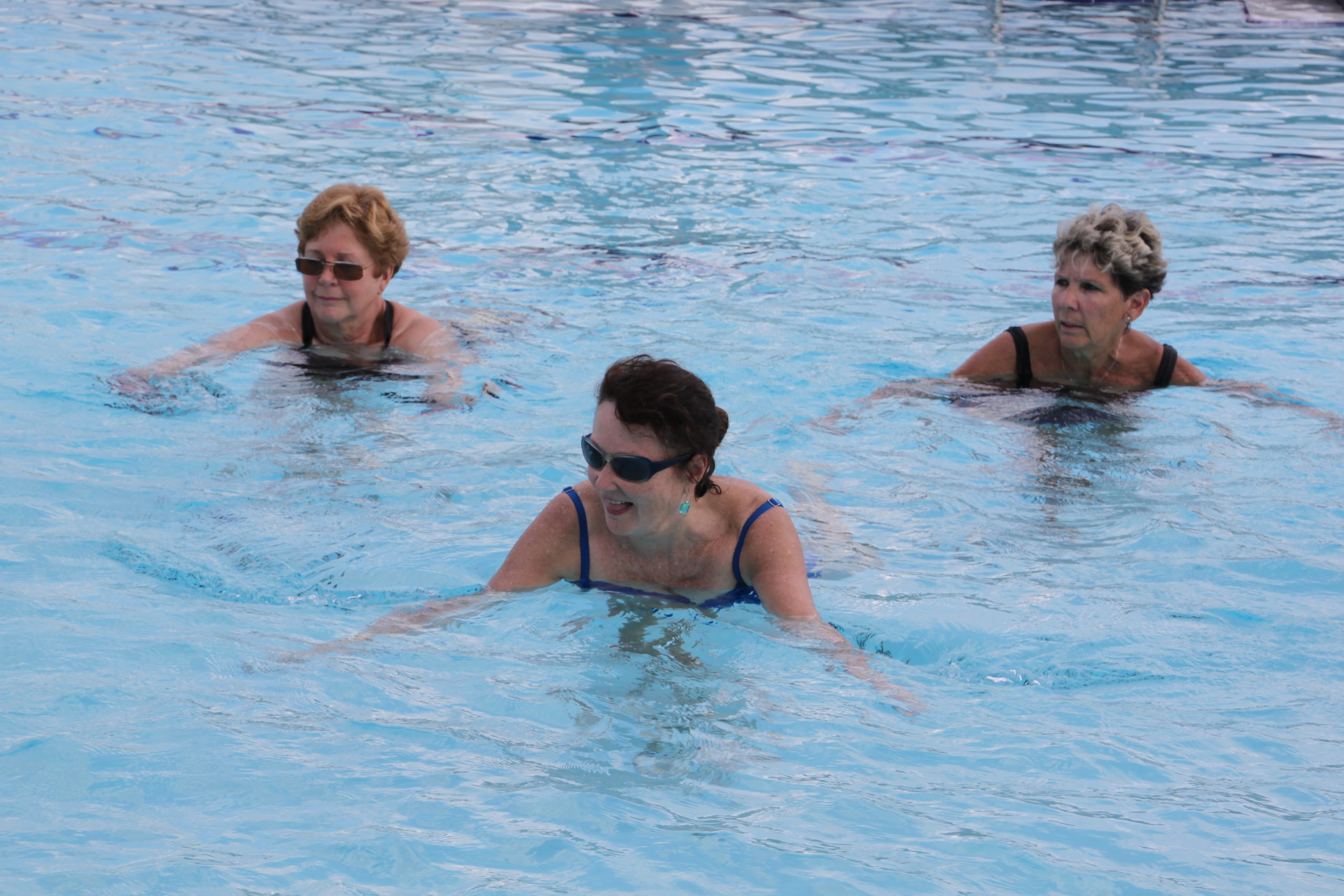Staying mobile as we age is key if we want to keep up with our younger family, those exciting vacations, and a weekly round of golf. Aches and pains might seem like an inevitability, but they don’t have to be.
One of the most effective exercises to help us with everyday movement is the hip hinge, especially for those suffering with daily pain; the benefits to the core, hips, and lower body might be the tonic you need.
Let’s dive into the hip hinge; what it is, why you need it, and how your life will benefit.
What is hip hinging?

Hip hinging is a functional movement that primarily targets your hips and core. On land, this exercise focuses on strengthening these areas, while in the pool, the added resistance gives your shoulders a workout, too. The movement involves balancing on one leg with a slight knee bend, maintaining a neutral spine or flat back, and tipping the body forward from the hips.
Why is hip hinging so important?
Hip hinging isn’t just another exercise; it’s a movement we rely on daily. Whether you’re walking up and down stairs, bending to pick up groceries, or engaging in sports like tennis, pickleball, or golf—hip hinging is crucial. It helps generate power and maintain balance, and doing it correctly can alleviate or even prevent lower back pain and sciatica.
The benefits of hip hinging
- Low-impact exercise: Keeping your feet on the ground makes this exercise gentle on your feet, knees, and hips.
- Strengthens essential muscles: this exercise strengthens muscles needed for everyday activities like walking, bending, and lifting, as well as those needed for sports.
- Improves balance: performing the exercise standing on one leg improves your balance.
- Isometric strengthening: hip hinging works on isometric strengthening for the knees, helping to build muscle without impact.
- Full body workout: it provides full-body strengthening without the strain of high-impact exercises.
2-Step pool progression for hip hinging
Water exercises add an extra dimension to hip hinging by incorporating resistance. Here’s a two-step progression to get you started:
1. Leg Swing
Stronger hips improve balance, which is why we start with a leg swing. Stand on one leg and swing the other leg front to back. This exercise not only strengthens the stationary leg but also stretches the moving leg, particularly the hamstrings. For added balance, keep a slight bend in the standing leg. The walking arm swings can stretch the shoulders and engage the upper body.
2. Hip Hinge
Adding a hip hinge to the leg swing introduces a functional movement that benefits everyone. In the pool, control the movement with your hands, pushing and pulling against the resistance to engage your core. This exercise involves balancing on one leg, with a slight knee bend, and tipping your body forward at the hips. It requires coordinated effort from the quads, hamstrings, adductors, lower back muscles, and core.
These exercises can be easily integrated into your routine. Whether it’s during technique-training between cardio sessions, hip and core functional training, sports-specific workouts, or as part of core training, hip hinging offers immense benefits.
Watch the video below for an easy-to-follow hip hinging lesson—part of a new workout launched inside Wavemakers in August that provides a comprehensive guide to leg swings and hip hinging in the pool.
The takeaway
Incorporating hip hinging into your fitness routine can significantly enhance your mobility and alleviate pain, helping you maintain an active and fulfilling lifestyle. Don’t let mobility issues hold you back—start practicing hip hinging today and feel the difference.
Ready to dive in? Learn more about Wavemakers, the membership that’s keeping people mobile and pain-free every single day. And when you’re ready to get started, join us inside here.
